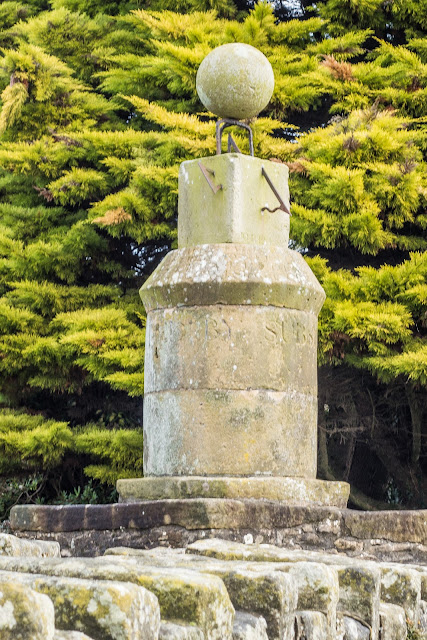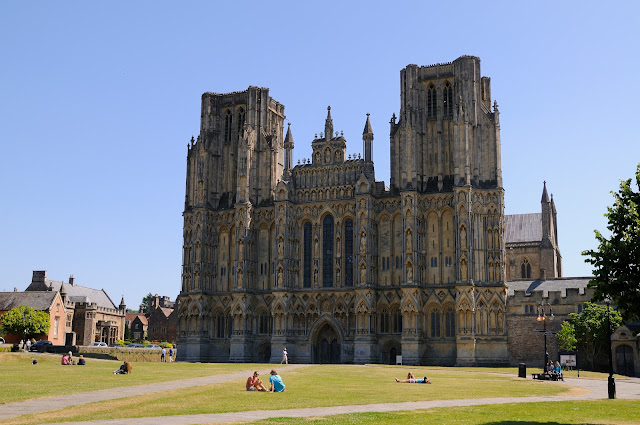Today was another exploring day through the village of Gillamoor and onto Lastingham. Not sure what we will see but as we have time on our hands ,and a full tank of petrol, off we go!
Gillamoor is a village and civil parish in the Ryedale district of the county of North Yorkshire. It is situated about three miles north of Kirkbymoorside on the edge of the North York Moors National Park.
Once there, the first thing to catch our eye was this sundial. An unusual, complex, four-faced sundial (pictured above) surmounted by a finely carved stone globe, a Grade II listed structure. It stands by the roadside in the centre of Gillamoor. It was erected August 27th 1800 by John Russell by public subscription
The small attractive village church of St. Aidan stands right on the edge of a moorland escarpment, dropping sharply for 150 feet to the River Dove and the southern entrance to Farndale. It was rebuilt single-handedly in 1802 by local stonemason James Smith of Farndale using stone from the dismantled medieval church in Bransdale. The building was restored in 1880, and furnished by Temple Moore in 1908.
A church has occupied the site since as far back as the twelfth century. The present church consists of a simple rectangular structure with a nave and chancel and a porch at the western end of the south wall and an attractive bellcote at the western end of the building. The church is windowless on the north and west sides, reckoned a necessary safeguard against the prevailing winds.
View from the village toward the moors before we drove onward toward Lastingham and a brief look at the church
Simon Jenkins, author of England's Thousand Best Churches, calls the Norman crypt of St Mary's church in Lastingham 'one of England's special places'. It is certainly amazing that it has existed for so long and just standing there and thinking of the generations of people who have knelt here, it is awe inspiring!
Around AD 725 the first stone church was built on this site n 1228 the former monastic church became the parish church for Lastingham village. A north aisle was added, followed by a south aisle in the 14th century, and a west tower was added in the 15th century. The church was in poor condition by the 17th century, until it was rebuilt by Thomas Ferres, a native of Lastingham who rose to become Mayor of Hull.
One interesting footnote in the history of Lastingham church comes from the 18th century when a curate named Jeremiah Carter was employed by an absentee vicar. Carter was married, with 13 children to support, so he supplemented his family income by fishing, while his wife kept the local Blacksmith's Arms pub.
Carter was known to play the violin to entertain visitors to the pub. When questioned by the archdeacon on the propriety of his actions, Carter replied that his parishioners enjoyed three advantages, being instructed in religion, fed and entertained all at once. He argued that this method spending the Sabbath was so agreeable that his charges were 'imperceptibly led along the paths of piety and morality...'
Interior highlights include a 12th century font, a medieval floriated grave slab, and a free-standing 15th century water stoup.
The main attraction for many people is the Norman Crypt.
And so onto Lunch which was greatly enjoyed at the Moors Inn. The Moors Inn has been trading as an inn since the 17th Century in the beautiful village of Appleton- Le Moors.




















































